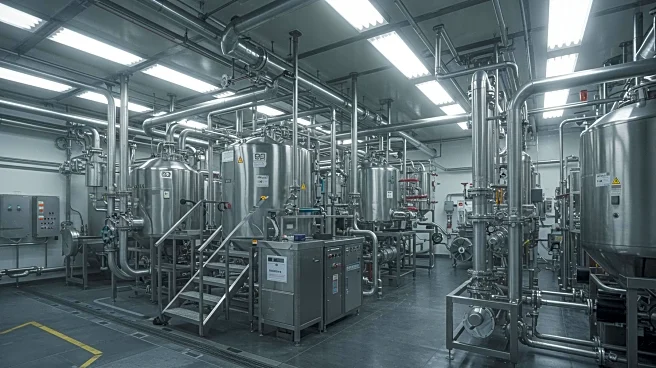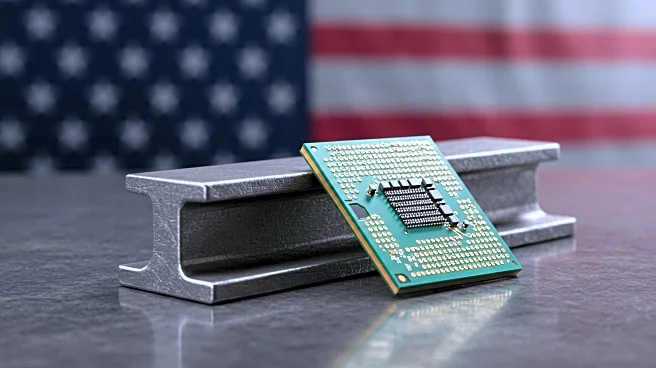What is the story about?
What's Happening?
AbbVie has announced plans to invest $195 million in constructing a new facility for active pharmaceutical ingredient (API) production in North Chicago, Illinois. The construction is set to begin in the fall, with the facility expected to be operational by 2027. This initiative is part of AbbVie's broader commitment to invest over $10 billion in U.S. capital projects over the next decade. The new plant will support the production of medicines in neuroscience, immunology, and oncology, aligning with the company's expansion into areas such as obesity drugs. The move comes amid potential tariff increases on pharmaceutical imports, as indicated by President Trump, which could rise to 250%. AbbVie's investment is relatively modest compared to other pharmaceutical giants like Johnson & Johnson and AstraZeneca, who have pledged significantly larger sums for U.S. manufacturing and research.
Why It's Important?
AbbVie's investment in U.S. manufacturing is significant in the context of potential tariff hikes on pharmaceutical imports, which could impact drug prices and availability. By expanding its domestic production capabilities, AbbVie aims to mitigate these risks and ensure a stable supply of critical medicines. This development is crucial for the U.S. pharmaceutical industry, as it may influence other companies to increase their domestic investments, thereby strengthening the industry's resilience against international trade fluctuations. The new facility will also contribute to local employment, supporting over 6,000 jobs across 11 sites in the U.S., and enhancing the economic landscape of Illinois.
What's Next?
The construction of the new facility is scheduled to commence in the fall, with full operational status expected by 2027. As the project progresses, AbbVie may face regulatory hurdles and community engagement challenges, which could impact timelines. The pharmaceutical industry will likely monitor this development closely, as it may set a precedent for future investments in U.S. manufacturing. Stakeholders, including local government and industry leaders, may engage in discussions to maximize the economic benefits of such investments while addressing any environmental or social concerns.
AI Generated Content
Do you find this article useful?












